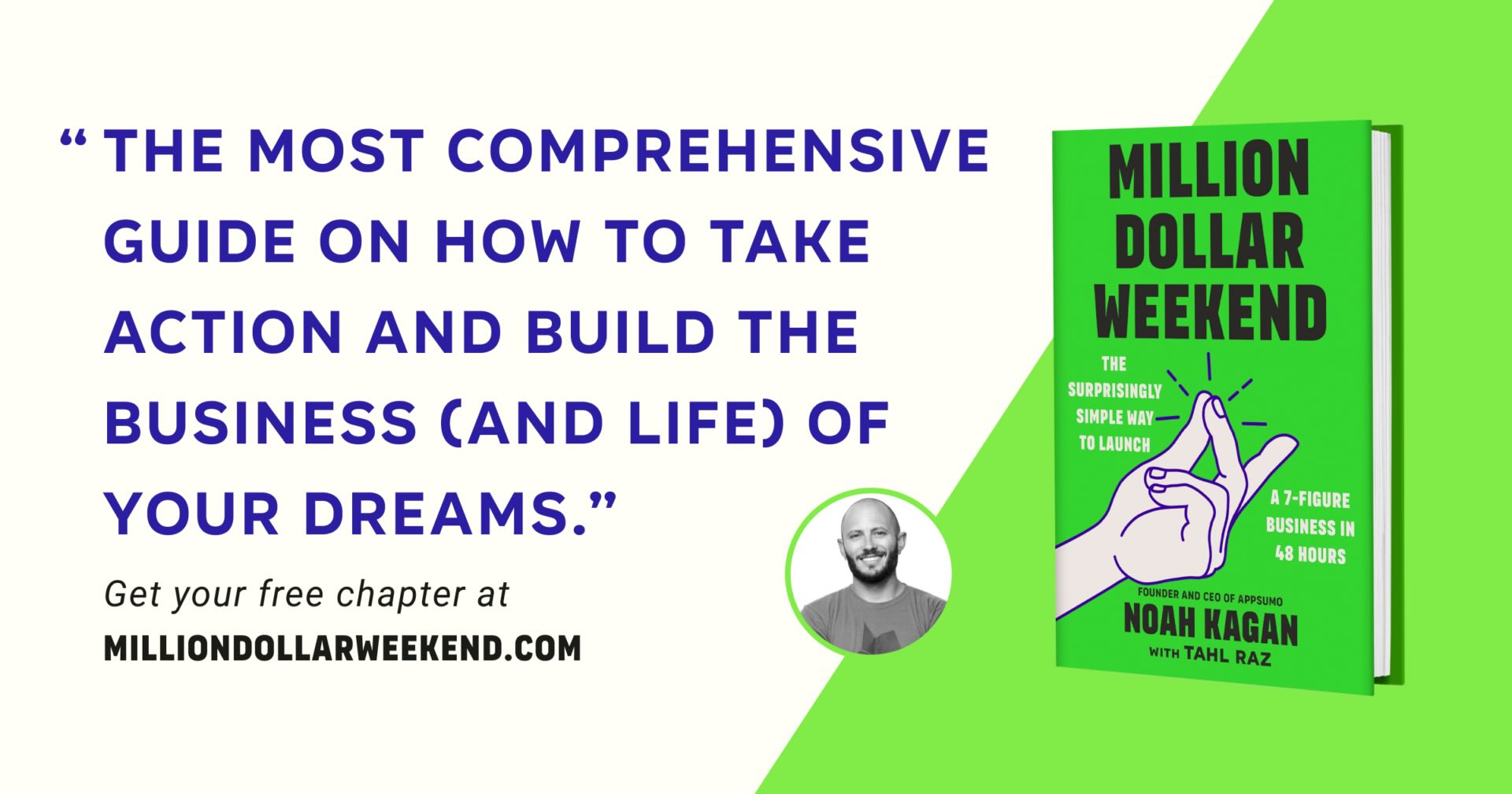
Before starting “Million Dollar Weekend” (MDW going forward) I thought it would be similar to other business books: a lot of fluff and a couple of takeaways. There is nothing inherently wrong with that, it’s a proven formula, and if you don’t like the fluff either find a summary (no shortage of them for any popular book) or (my solution) just read faster. I quickly found out there was not much fluff in MDW and it went hard from the very beginning.
I started MDW because I had a question: “How do I learn to think like a person who launches businesses?” I’ve been struggling with that over the years. I read books and studied courses, even watched people do it at close range. This reminds me of a quote (that I’m sure I read in a book but couldn’t find the source):
“How do I draw a masterpiece?”
“Become a person who draws masterpieces and draw naturally.”
It’s one thing to know and quite another to be able to do it. I work full-time as a software engineer, and (having read the book) the skillset I use every day and the goals I pursue at work are completely different to what a successful entrepreneur would do to work on a business.
Kagan does an admirable job not only telling what he suggests to do, but what people often get wrong. I saw myself in many of his descriptions.
I won’t retell the book here, it’s only a little over 200 pages and the more important things are all in the first half — you can read all of it in a couple of hours. What I learned was that at the core of Kagan’s approach are two things: playful, but relentless experimentation and directly asking actual people for money. Between them, they share the expectation of failure. Making an experiment, you are prepared for it to fail — and just as prepared to make the next one. Asking people for money, you are prepared for each person to say “no” — and ready to immediately ask the next person.
Another thing that I found particularly useful were his criteria of ideas worth trying, from his unique perspective as a successful online entrepreneur. The most common error startup founders make is not getting “product-market fit” right, or simply building something nobody wants. Kagan addresses this head-on with examples and questions to ask yourself and prospective customers. Developers like to write code and don’t like talking to people — sometimes it works out, but for most people (Kagan insists) it’s infinitely more useful to talk to as many potential customers as possible even before writing any code. Paul Graham makes the same argument in his classic essay “Do Things That Don’t Scale”:
…a combination of shyness and laziness. They’d rather sit at home writing code than go out and talk to a bunch of strangers and probably be rejected by most of them.
…a lot of startup founders are trained as engineers, and customer service is not part of the training of engineers. You’re supposed to build things that are robust and elegant, not be slavishly attentive to individual users like some kind of salesperson.
Why am I posting this review on a tech blog? MDW is a useful change of perspective from “I’m just doing my job”. As software engineers, we are in the unique position to produce infinitely scalable products (in contrast to physical goods). This also means we can do a lot of experiments with no downsides — just throw the results away if they don’t work and try something else.
Hey, now I can use the lesson from the book and ask! If you liked this, please subscribe to the newsletter by putting your email in the form below. I’ll make it worth your while.